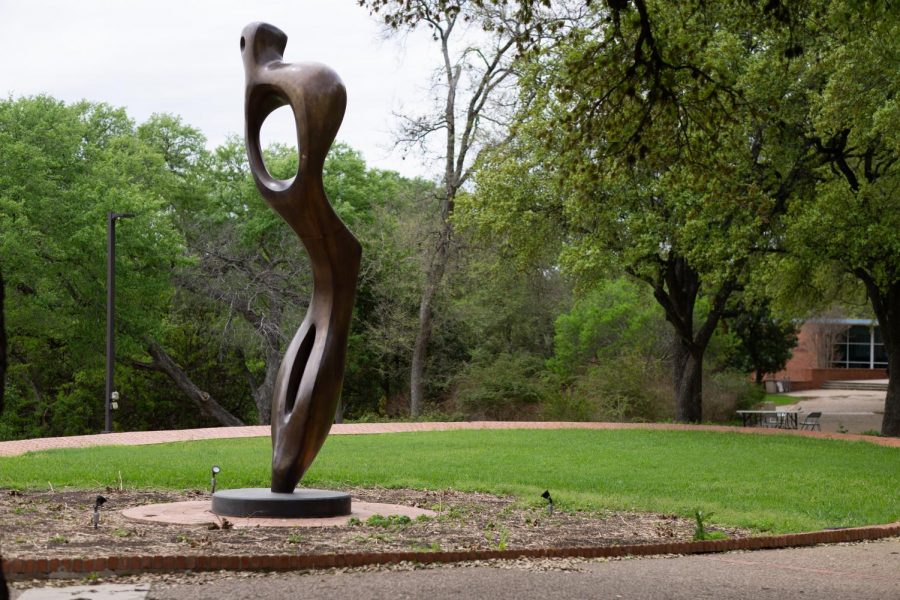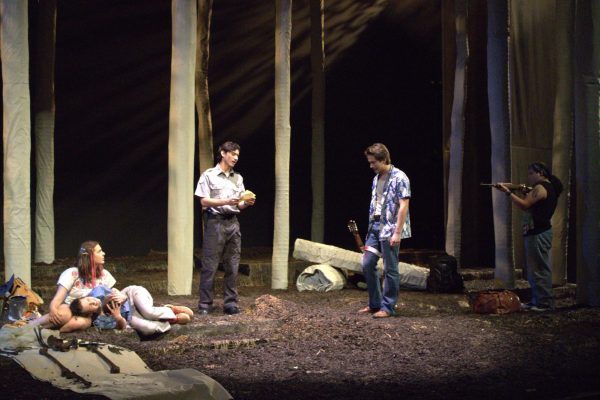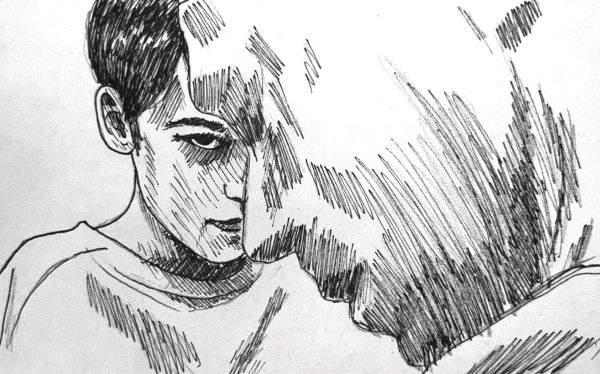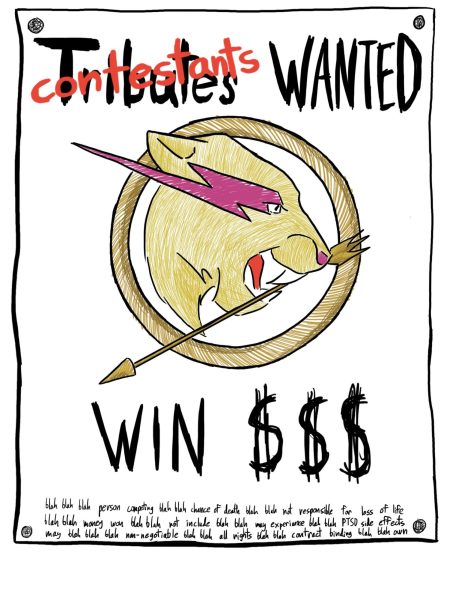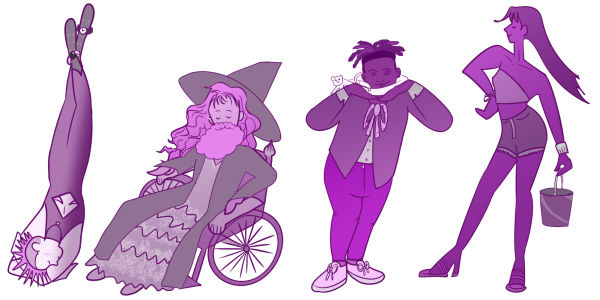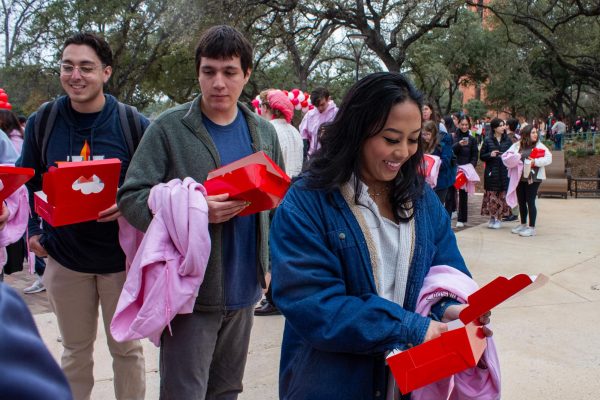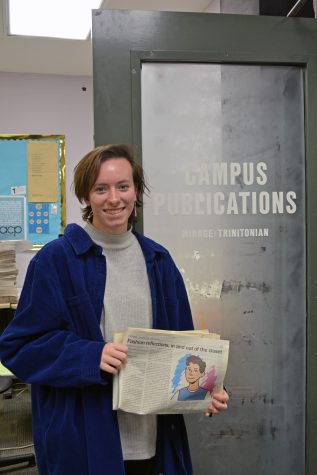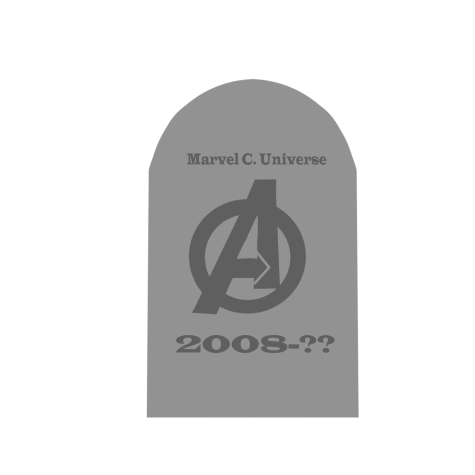Henry Moore sculpts with the sky
‘Large Interior Form’ was donated to Trinity in 1983 by Arthur and Jane Stieren
Trinity’s campus could double as an all-inclusive art museum, considering the amount of sculptures, architecture and artworks displayed around campus. After moving off-campus, I realized how much I had taken for granted concerning the aesthetic appeal of Trinity’s landscape.
It is so easy to walk straight past sculptures or paintings without much of a second thought when you have other things on your mind. Enjoying artwork can be a relief sometimes — kind of like slowing down to smell the roses, but instead, coming to a full stop to stare and reflect.
Ever been blinded by the gleaming sun reflecting off of a large abstract sculpture in the middle of Coates Esplanade?
The culprit blinding you on your way to and from Coates Student Center would be Henry Moore’s 16-foot bronze sculpture, Large Interior Form. Large Interior Form adds to the beauty and mystique of Trinity’s landscape and can be — believe it or not — easily overlooked.
Henry Moore was one of the most prominent British sculptors of the 20th century and belongs to the same generation of modernists who worked in the early part of the twentieth century. These masters of modernism include Picasso, Matisse, Braque and Leger, among others.
Maybe one of these artists rings a bell? Either way, Moore’s work on campus is something to brag about and take advantage of.
Large Interior Form was created between 1953 and 1954 and stands in the middle of Coates Esplanade, right where a reflecting pond used to be situated. Donated to Trinity in 1983 by Arthur and Jane Stieren, the work is one of multiple bronze castings, similar in this way to Barbara Hepworth’s sculpture, Conversations with Magic Stones.
Moore’s organic curvilinear forms complement Trinity’s picturesque landscape nicely. The sculpture acts as a monumental landmark and accentuates the curves and wandering paths that are already present on Trinity’s campus.
To get another student’s perspective, I asked Luke Leblanc, junior art history and urban studies double-major, what he thought about the sculpture.
Leblanc described the similarities he sees between the sculpture and Trinity’s landscape.
“I’ve always appreciated the movement of the sculpture and its conversation with its surroundings. Its sloping forms seem to mimic the meandering branches of the trees on the Coates Esplanade,” said Leblanc.
The negative spaces in the holes of the sculpture allow for the sky to peek through — Leblanc commented on this phenomena.
“I have always seen the three holes in the sculpture as aids to framing negative space and the sky beyond,” Leblanc said.
Moore was also known to have appreciated the role that the sky plays in relation to his sculptures.
“The sky is one of the things I like most about ‘sculpture with nature.’ There is no background to sculpture better than the sky because you are contrasting solid form with its opposite space. The sculpture then has no competition, no distraction from other solid objects. If I wanted the most fool-proof background for a sculpture, I would always choose the sky,” Moore said.
Moore’s artistic training was centered on the study of the nude body. Perhaps Moore’s training had an influence on the organic, human forms found in his “abstract” sculptures. To me, Large Interior Form somewhat resembles the hourglass form of a female body.
Leblanc described what the abstract sculpture looks like to him.
“The sculpture reminds me of someone dancing by the way the upper, middle and lower sections are contorted in different directions,” Leblanc said.
It’s easy to overlook things that we aren’t looking for. Instead of flying by artworks at Trinity in our rushed frenzy to class, we should try to slow down and appreciate the small beauties displayed around campus — and the large ones too.
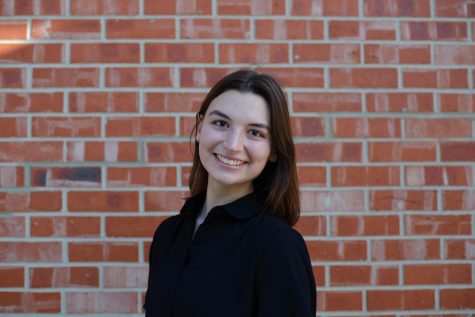
My name is Ashley Allen and I am a senior completing a BA in art history at Trinity University, with a minor in Medieval and renaissance Studies. I hope...

